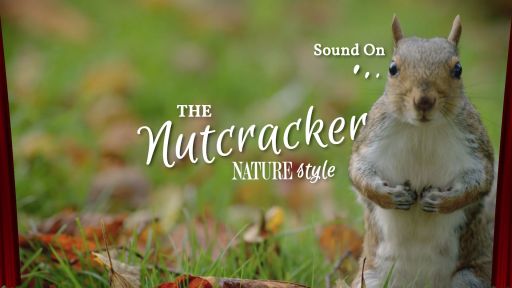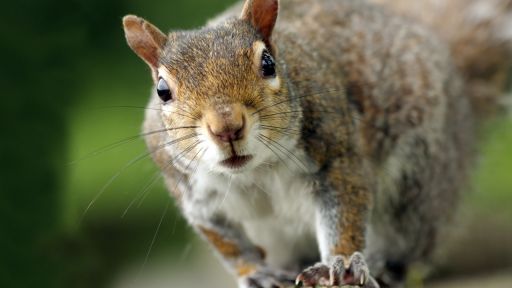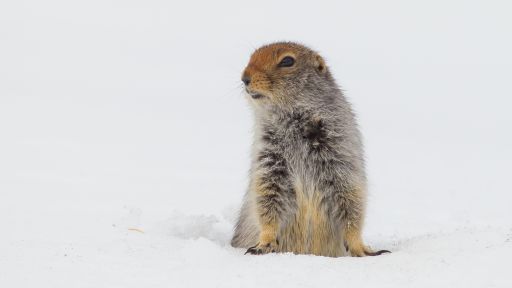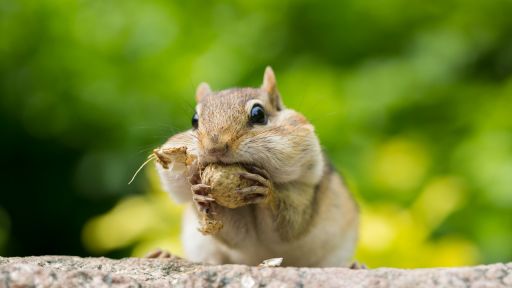From tiny chipmunks to big prairie dogs, the squirrel family is one of the most widespread on Earth. There are almost 300 species of squirrels that can glide through the air, outwit rattlesnakes and survive the coldest temperatures of any mammal. What is the secret to their success? Uncover the extraordinary abilities of these cheeky nut lovers as a filmmaker puts their problem-solving to the test on a specially designed obstacle course. Join some of the world’s top squirrel scientists who are making groundbreaking discoveries:from the brainy fox squirrel who can remember the location of 9,000 nuts, to the acrobatic gray squirrel whose tree-top leaps are the basis for new designs in robotics. See the world through the eyes of an orphan red squirrel called Billy as he grows up and develops all the skills he will need to be released back into the wild.
Noteworthy Facts:
- There are nearly 300 species of squirrels in the world, living in a huge range of habitats, from the forest canopy to the Arctic tundra to the baking desert.
- In the UK, the red squirrel population has plummeted by 95 percent. Seventy-five percent of the remaining red squirrels are found in Scotland.
- More than three feet long in size, the Malabar giant squirrel can hang upside down while they feed and use their grip to run down trees headfirst. An unusually flexible ankle joint allows their feet to rotate almost 180 degrees.
- A squirrel’s front teeth never stop growing to counteract the wear from a lifetime of relentless chomping.
- To survive the frigid winters in Alaska, the Arctic ground squirrel hibernates by dropping its heart rate, breathing and body temperature and survives on stored fat alone. Every two to three weeks the squirrel will shiver to warm itself.
- Squirrels are extraordinary leapers who can leap about 8-10 body lengths. Dr. Greg Byrnes, who has spent the last four years tracking squirrel’s movements in his lab at Siena College, learns that a squirrel’s leaping ability comes from their large leg muscles that act like an elastic band. To minimize the impact, they land with all four limbs on the ground at the same time.
- The Northern flying squirrel is just six inches long and weighs the same as a typical smartphone. Yet, it can leap almost 150 feet between trees at speeds of up to 20 miles per hour. Its “wings,” a membrane that stretches between its wrists and ankles, and another smaller membrane between the ankles and tail, allow it to glide through the canopy. A piece of cartilage on the end of the “wing” gives them an upturned tip, which reduces drag and increases stability (many airplanes have upturned tips on their wings for the same reason).
Buzzworthy Moments:
- To help combat the declining red squirrel population, Sheelagh McAllister, Head of Small Mammals at the National Wildlife Rescue Centre in Scotland, takes in a newborn red squirrel displaced from his nest. Naming him Billy, she weans and raises him at home until he is ready to be released back into the wild. McAllister and her team look after nearly 10,000 animals every year.
- To defend her pups from a predatory rattlesnake, a California ground squirrel pumps extra blood into her tail and waves it repeatedly. The blood flow in her tail is normally used to help regulate temperature, but the extra heat is sensed by the rattlesnake, making her seem bigger than she really is.
- Although chipmunks sleep for days at a time through the winter to save energy, when they wake they need food to stay alive. To prepare for this scenario, they gather nuts throughout autumn and stockpile them. Flexible cheek pouches make the task slightly easier; chipmunks can fit up to seven large nuts in their mouth at a time. They must also defend their hoard from other chipmunks; see one fight break out over a particular stockpile.
- To avoid pilfering, tree squirrels don’t risk putting all their nuts in one basket; they bury each one separately in a strategy known as scatter hoarding. To learn how these squirrels are able to remember where they bury each nut, Dr. Mikel Delgado of the University of California at Berkeley inserts a tiny microchip into several test nuts. She discovers that Fox squirrels can remember and locate about 90 percent of the nuts they bury. Their brains grow larger than other species of squirrel, particularly during the fall season when nuts are plentiful.
- Gray squirrels are one of the smartest species of all. Wildlife filmmaker Douglas Parker has found a unique way to demonstrate their adaptability. To get to a large pile of hazelnuts, wild gray squirrels must leap between the colored discs of an obstacle course constructed by Parker. Through trial and error, driven by their desire for nuts, these wily grays combine their grip, persistence, memory and problem-solving skills to get through the course.





